Having a well-equipped first aid kit is an essential aspect of emergency preparedness. However, with so many options available, it can be overwhelming to choose the right one. It’s important to select a first aid kit that is tailored to your individual needs and provides the necessary supplies for potential emergencies.
When choosing a first aid kit, consider the size, contents, and portability. The size of the kit should match the number of people it will serve and the activities they will be engaged in. The contents should include essential items such as bandages, antiseptics, and medications that can assist in different emergency situations. Furthermore, the kit should be portable and easy to carry.
Key Takeaways:
- Choosing the right first aid kit is essential for emergency preparedness.
- The kit should be tailored to your individual needs and the activities you will be engaged in.
- Consider the size, contents, and portability of the kit when making a decision.
Understanding First Aid Essentials
When it comes to preparing for emergencies, having the right first aid essentials can make a significant difference. A well-stocked first aid kit can help you handle injuries, illnesses, and accidents effectively. Whether you are at home, at work, or on the go, having a first aid kit that contains the necessary supplies is crucial.
First aid supplies can include a variety of items depending on your needs. Some of the most important first aid essentials include:
- Bandages, plasters (UK), or adhesive tape
- Clean gauze pads and dressings
- Antibacterial ointments and creams
- Pain relievers and fever reducers
- Tweezers and scissors
- Disposable gloves
- Thermometer
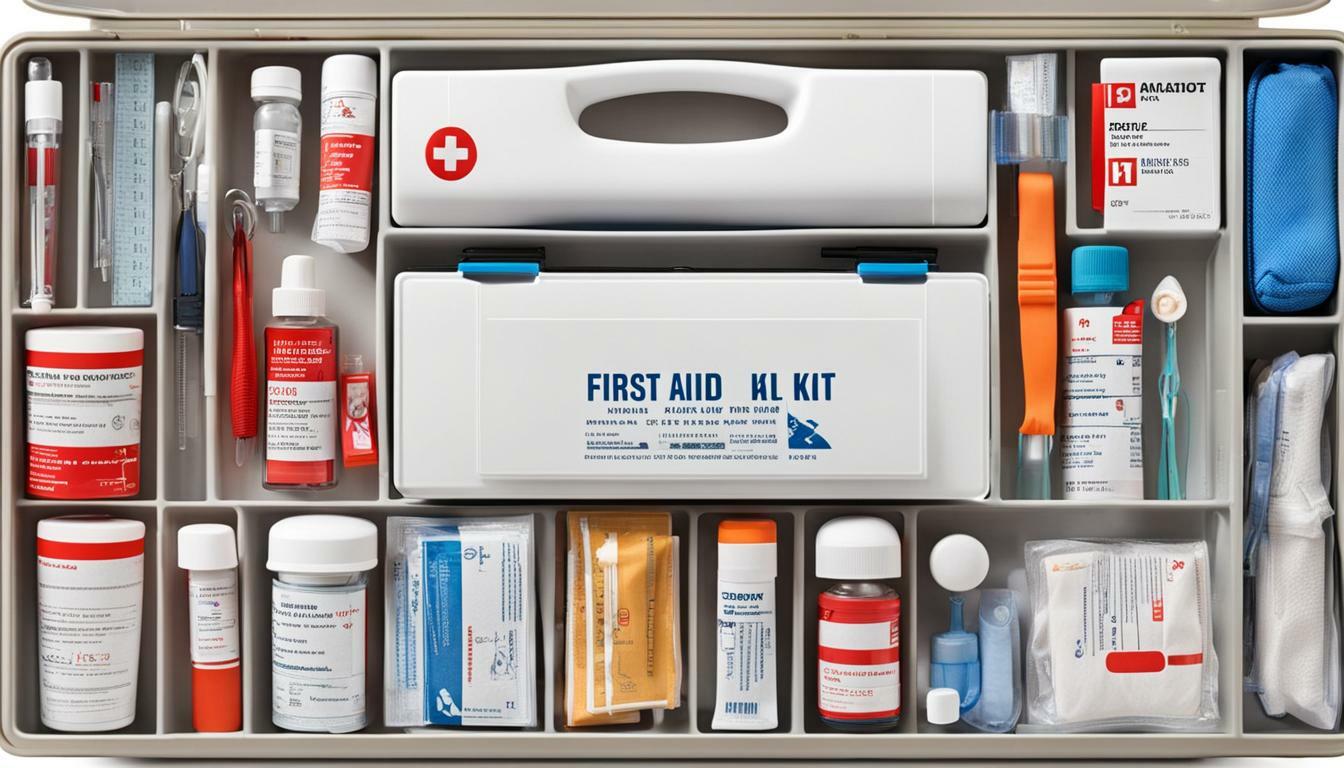
These first aid supplies can help you treat cuts, scrapes, burns, sprains, and other injuries. Some of the equipment you might need in a first aid kit includes defibrillators, oxygen tanks, and airway management devices, depending on your level of training and expertise. It’s important to keep in mind that different situations may require different kinds of first aid equipment, so having a well-rounded kit can be very beneficial.
It’s also important to know how to use the first aid supplies in your kit. You can take courses and get training from certified organisations such as St John Ambulance or The British Red Cross, which offer a range of training courses for different levels of first aid knowledge.
While having a first aid kit is important for handling emergencies, it’s also essential to keep it well-stocked and up-to-date. Regularly check your kit’s contents and replace any expired or used items.
Assessing Your Needs
When it comes to first aid, it’s important to be prepared for a range of emergencies that may arise. Assessing your specific needs can help you tailor your first aid kit to your requirements.
Creating a first aid checklist is a great way to identify what supplies you may need. Consider the following scenarios:
| Scenario | Possible First Aid Supplies |
|---|---|
| Outdoor Activities | Sunscreen, Insect repellent, Cold packs, Antihistamines, Snake bite kit |
| Home Emergencies | Adhesive bandages, Gauze pads, Peroxide or alcohol, Antiseptic ointment, Scissors, Tweezers, Digital thermometer |
| Travel | Pain relievers, Motion sickness pills, Electrolyte replacement, Anti-diarrhea medication, Prescription medications |
It’s important to also consider any chronic medical conditions or allergies when creating your first aid kit. Make sure to include any necessary medications, such as epinephrine auto-injectors or insulin. Being prepared for specific needs can make a big difference in an emergency situation.
Emergency preparedness is key when it comes to first aid. Make sure to regularly check and update your first aid kit to ensure it’s fully stocked and ready to use. It’s a good idea to keep a list of emergency phone numbers and first aid instructions on hand as well.
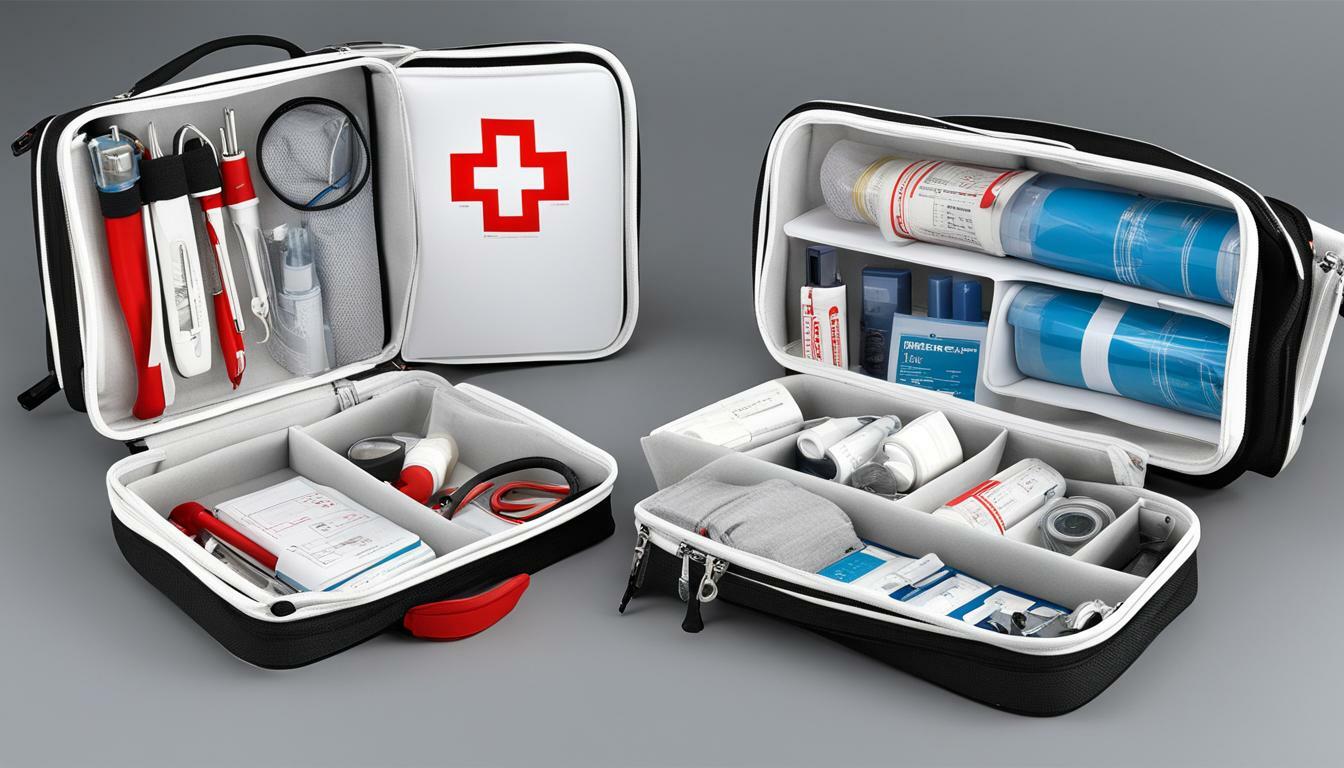
By assessing your needs and tailoring your first aid kit accordingly, you can ensure that you’re prepared for any emergency that comes your way. Don’t wait until it’s too late to be prepared.
Different Types of First Aid Kits
When it comes to buying a first aid kit, there are different types available to suit various needs and situations. Understanding the differences between them can help you choose the right kit for your requirements.
Home Kits
A home first aid kit is typically larger and more comprehensive than other types of kits. It should contain basic supplies for treating common injuries and emergencies that may occur at home, such as cuts, burns, and sprains. It is important to keep a home first aid kit in a prominent and easily accessible location, such as in the kitchen or bathroom.
Travel Kits
A travel first aid kit is designed to be compact and portable, making it easy to carry with you on the go. It should contain basic supplies for treating minor injuries and illnesses that may occur while traveling, such as cuts, scrapes, and headaches. Consider the duration and destination of your travel when choosing a suitable travel first aid kit.
Outdoor Kits
An outdoor or wilderness first aid kit is designed for use in remote locations and outdoor activities, such as camping, hiking, and backpacking. It should contain supplies for treating more serious injuries and emergencies, such as fractures, hypothermia, and dehydration. Consider the length and difficulty of your outdoor activity when selecting a suitable outdoor first aid kit.
When buying a first aid kit, it is important to carefully consider your needs and choose a kit that is appropriate for your specific situation.

The Role of Technology in Modern First Aid Kits
Technology has revolutionized many aspects of our lives, including the way we approach first aid. A modern first aid kit may incorporate tech gadgets and apps that can assist in medical emergencies.
Tech gadgets: Automated CPR devices and defibrillators can help save a life in case of cardiac arrest. These devices can be found in public spaces and workplaces but can also be purchased for personal use. They are easy to use and provide guidance for those without medical training.
Mobile apps: There are many mobile apps available that can provide guidance and instructions for performing first aid procedures. Some apps have step-by-step instructions with images or videos, while others can track the user’s location and provide information on nearby medical facilities.
While tech gadgets and apps can be useful in certain emergency situations, they may not be necessary for everyone’s needs. It’s important to assess one’s specific needs and activities before deciding on purchasing a first aid kit with tech gadgets or apps.
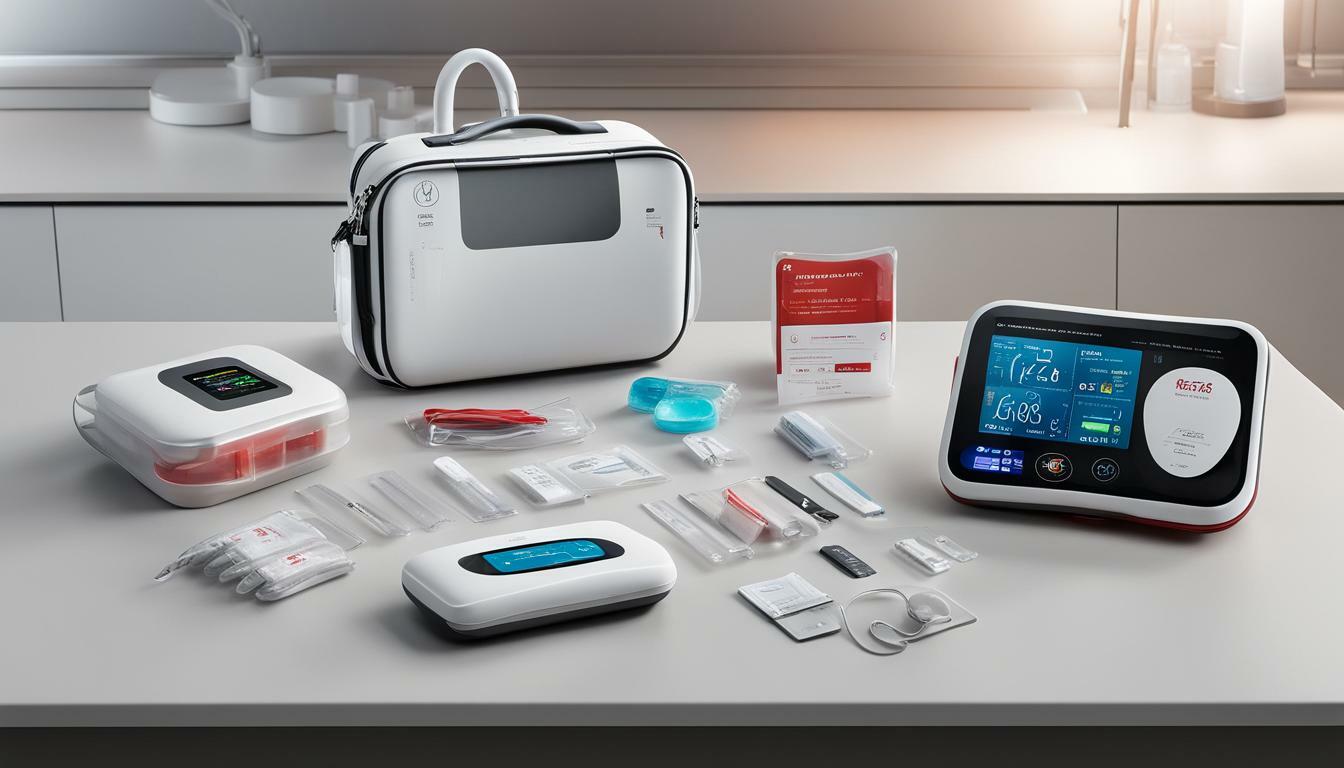
Evaluating Quality and Reliability
When it comes to choosing a first aid box, quality and reliability are essential factors to consider. A well-crafted kit ensures that the contents remain intact and fully operational when needed the most.
First things first, check for the certification of the first aid kit. The British Standard BS 8599 is the current standard for workplace first aid kits. It ensures that the kit contents match the potential hazards in the workplace. For personal use, look for a kit that has a CE mark, which signifies compliance with the EU standards.
Another aspect to consider is the durability of the kit. Check the material of the kit, and ensure that it is waterproof, dust-proof, and crush-proof, protecting the contents from damage. Additionally, consider the reputation of the manufacturer and read customer reviews to get insights into the kit’s quality and reliability.
Proper maintenance of the first aid kit is crucial in ensuring its longevity and effectiveness. Ensure that the kit stays clean and dry and is stored at the appropriate temperature, protecting the contents from damage. Additionally, ensure that the kit is accessible and visible, and the contents are organized and easily identifiable.
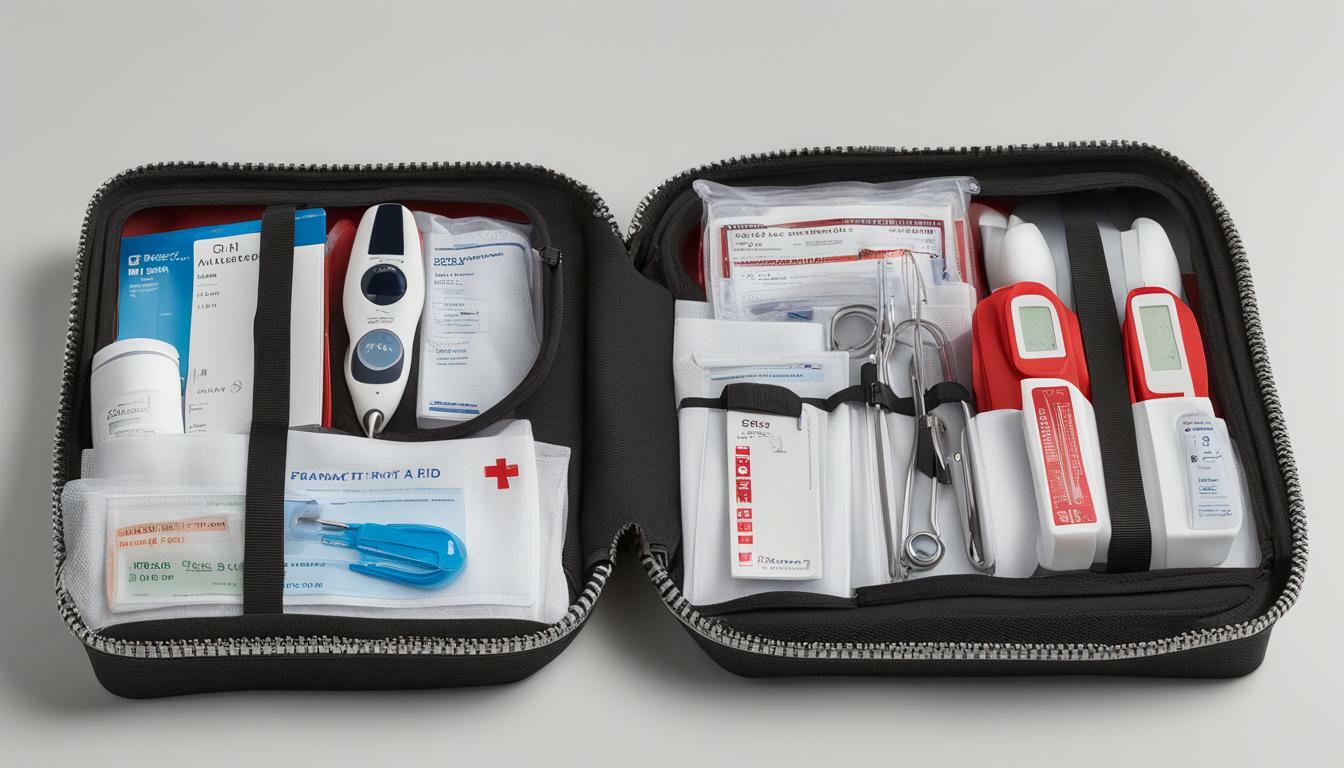
By evaluating the quality and reliability of a first aid kit, you ensure that you are well-equipped to handle any emergency situation.
Considering Portability and Accessibility
When selecting a first aid kit, it’s essential to consider its portability and accessibility. A bulky or disorganized kit can make it difficult to access the necessary supplies quickly during an emergency. It’s also important to choose a kit that is easy to carry, whether it’s for daily use or travel purposes.
One of the key factors to consider is the size of the kit. A larger kit may be necessary for outdoor activities or for a larger group of people, but it may not be practical for everyday use. On the other hand, a small kit may not have all the necessary supplies for more severe injuries or emergencies.
The organization of the supplies within the kit is also crucial for accessibility. Look for a kit with labeled compartments or clear pockets, so you can quickly locate the necessary supplies. It’s also important to keep the supplies well-stocked and up-to-date to ensure efficacy.
Portability is also important, especially for travel kits. Look for kits that are lightweight and compact, with a durable case. A waterproof case is ideal for outdoor activities or if the kit may be exposed to moisture.
Overall, choosing a first aid kit with portability and accessibility in mind can make all the difference in an emergency situation.
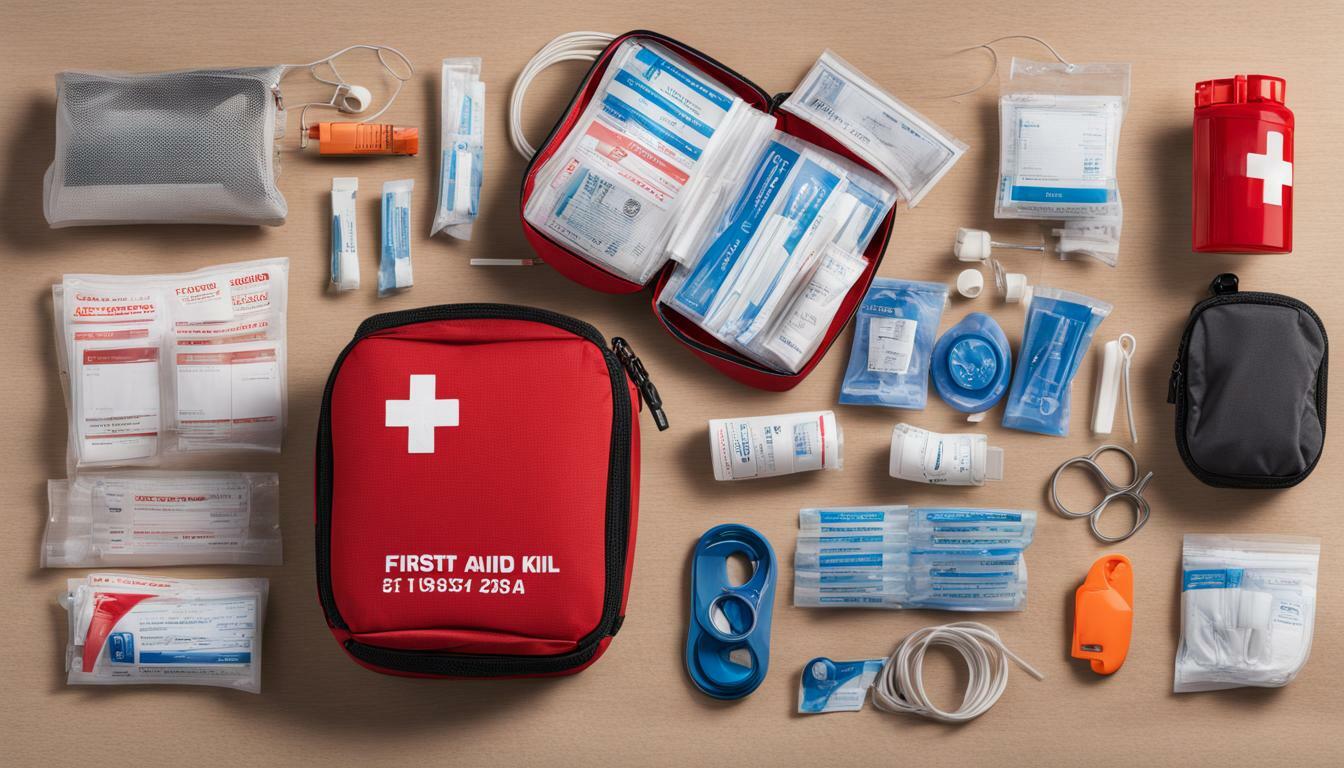
Budgeting for Your First Aid Kit
When it comes to purchasing a first aid kit, cost is an important consideration. Before you make a purchase, it’s important to set a budget and determine what items are essential for your kit.
The cost of first aid equipment can range from a few pounds to several hundred, depending on the type and size of the kit. It’s important to remember that a higher price doesn’t necessarily mean higher quality or better suitability for your needs.
To budget for your first aid kit, start by identifying the items that are most essential for your kit. For example, if you plan on using your kit for hiking or camping, you may need items such as insect repellent, sunscreen, and a snake bite kit. If you’re creating a kit for your home, you may not need these items but instead require items such as burn gel, pain relief medication, and sterile bandages.
Once you have determined the essential items for your kit, you can allocate your budget accordingly. For example, if you have a limited budget, prioritize purchasing high-quality bandages, antiseptics, and other basic supplies over gadgets or technology that may not be necessary for your needs.
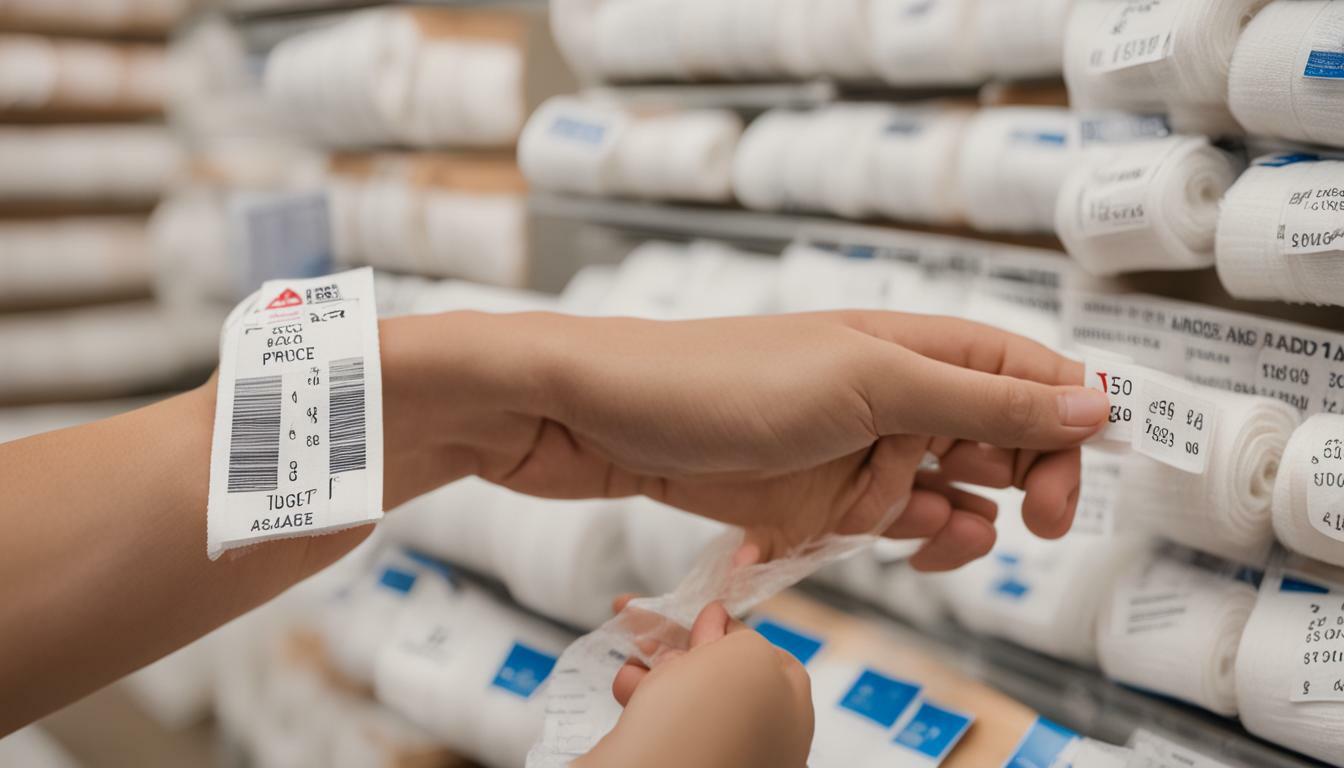
It’s also important to consider the long-term value of your first aid kit. Investing in a higher-quality kit may save you money in the long run by reducing the need for frequent replacements or additional purchases of individual supplies.
By setting a budget and prioritizing essential items, you can ensure that you purchase a first aid kit that is both affordable and effective in meeting your needs.
Seeking Professional Advice
Choosing the right first aid kit can be a daunting task, with countless factors to consider. It is essential to ensure that the kit you select is tailored to your specific needs and is equipped with the necessary supplies to handle emergencies. Seeking professional advice can provide valuable guidance and support in making an informed decision.
Healthcare professionals, first aid instructors, or emergency responders can provide expert advice on choosing a first aid kit that meets your requirements. They can offer recommendations for specific types of kits based on the activities you engage in or the medical conditions you may have.
Before making a purchase, consider consulting a professional to help you assess your needs and provide essential guidance on the contents of a reliable first aid kit. They can also provide training on how to use specific items included in the kit, such as automated external defibrillators (AEDs) or tourniquets.
Don’t hesitate to seek professional advice, as it can make a significant difference in ensuring that you are well-prepared for emergencies. Take advantage of educational resources and training available in your community, including first aid courses and certification programs.
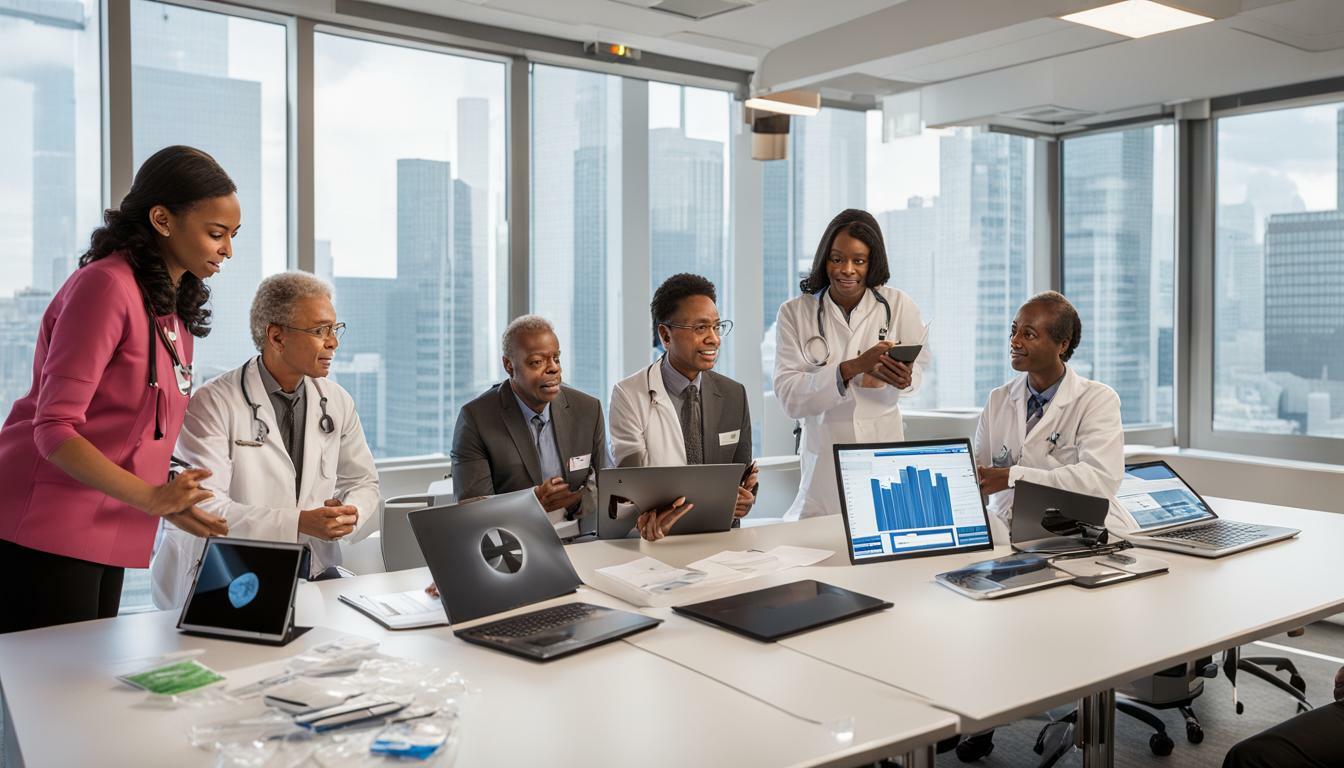
Remember, when it comes to first aid, it is always better to be safe than sorry. By seeking professional advice, you can ensure that you are adequately prepared for any emergency that may arise.
Personalizing Your First Aid Kit
While it’s crucial to ensure that your first aid kit contains all the necessary supplies to handle most emergencies, personalizing your kit can ensure that you have the essential items to manage any specific medical needs.
Start by assessing your unique requirements and identifying any chronic conditions or allergies that may require specific medications or supplies. For example, if you or a family member has asthma, an inhaler should be included in the kit. If you frequently engage in outdoor activities, such as hiking or camping, consider adding items like insect repellent, sunscreen, and a compact emergency blanket.
It’s also essential to think about the number of people who may need to use the kit. If you have kids, make sure to include child-specific items like pediatric pain relievers and liquid medication dispensers.
While customizing your kit, try not to compromise on the basics. Include all the first aid essentials such as bandages, antiseptics, and medications, and then add any additional items that cater to your personal needs.
Remember to periodically review and update your kit as your needs change. For example, if you start a new medication, you’ll need to add it to your first aid kit.
Personalizing your first aid kit ensures that you’re prepared to manage any emergency medical situation that may arise.

Customize Your Kit Checklist:
- Create a list of any chronic conditions and allergies you or your family members have.
- Add specific medications or supplies required for managing those conditions.
- Include pediatric pain relievers and liquid medication dispensers if you have kids.
- Think about any outdoor activities you engage in and add any necessary items like insect repellent and a compact emergency blanket.
- Periodically review and update your kit as your needs change.
Conclusion
Choosing the right first aid kit is crucial for ensuring you are prepared for emergencies. By tailoring your kit to your specific needs, you can have peace of mind knowing that you have the necessary supplies to handle different scenarios.
We have explored the essential items that should be included in a first aid kit, the different types of kits available, and the incorporation of technology in modern kits. We have also provided guidance on assessing the quality and reliability of a kit, budgeting for it, and personalizing it.
Remember to seek professional advice and consult healthcare professionals or first aid experts for specific recommendations and guidance based on your individual needs. Lastly, don’t forget to prioritize portability and accessibility for easy carry and quick access to necessary items.
With these tips and considerations, you are now ready to choose the right first aid kit to ensure you are well-prepared for any emergency. Stay safe!
